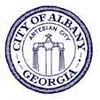Albany, Georgia
| City of Albany, Georgia | |||
|---|---|---|---|
| — City — | |||
|
|||
| Nickname(s): The Good Life City, The Artesian City | |||
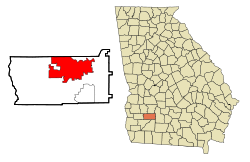 |
|||
| Coordinates: | |||
| Country | United States | ||
| State | Georgia | ||
| County | Dougherty | ||
| Incorporated (city) | December 27, 1838 | ||
| Government | |||
| - Mayor | Willie Adams, Jr. (D) | ||
| Area | |||
| - City | 55.9 sq mi (144.7 km2) | ||
| - Land | 55.5 sq mi (144.8 km2) | ||
| - Water | 0.3 sq mi (0.9 km2) | ||
| Elevation | 203 ft (62 m) | ||
| Population (2000) | |||
| - City | 76,939 (city proper) | ||
| - Density | 1,385.5/sq mi (535.0/km2) | ||
| - Metro | 164,069 | ||
| 2007 metro pop. est.[1] | |||
| Time zone | EST (UTC-5) | ||
| - Summer (DST) | EDT (UTC-4) | ||
| Area code(s) | 229 | ||
| FIPS code | 13-01052[2] | ||
| GNIS feature ID | 0310424[3] | ||
| Website | Albany, Georgia | ||
Albany is a city in and the county seat of Dougherty County, Georgia, United States, in the southwestern part of the state.[4] It is the principal city of the Albany, Georgia metropolitan area. The population was 76,939 at the 2000 census.
Contents |
Geography
Albany is located at (31.582273, -84.165557)[5].
The total area is 0.59% water. Albany lies in a belt of rich farmland in the East Gulf coastal plain on the banks of the Flint River.
Demographics
MSA
According to the United States Census Bureau, the Albany, Georgia Metropolitan Statistical Area (MSA) had an estimated population of 164,069 and ranked #234 in the U.S. in 2007[6]. The MSA consists of Dougherty, Terrell, Lee, Worth, and Baker Counties.
City
As of the census[2] of 2000, there were 76,939 people, 28,620 households, and 18,889 families residing in the city. The population density was 1,385.5 people per square mile (535.0/km²). There were 32,062 housing units at an average density of 577.3/sq mi (222.9/km²).
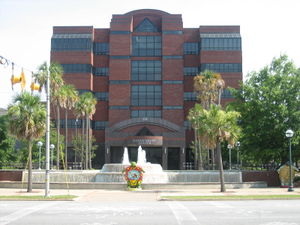
The racial makeup of the city was 64.80% African American and Black, 33.21% White, 0.21% Native American, 0.60% Asian, 0.03% Pacific Islander, 0.45% from other races, and 0.71% from two or more races. Hispanic or Latino of any race were 1.23% of the population.
There were 28,620 households out of which 32.3% had children under the age of 18 living with them, 36.6% were married couples living together, 25.2% had a female householder with no husband present, and 34.0% were non-families. 28.8% of all households were made up of individuals and 9.6% had someone living alone who was 65 years of age or older. The average household size was 2.54 and the average family size was 3.14.
In the city the population was spread out with 27.8% under the age of 18, 13.0% from 18 to 24, 27.7% from 25 to 44, 19.6% from 45 to 64, and 11.8% who were 65 years of age or older. The median age was 31 years. For every 100 females there were 85.3 males. For every 100 females age 18 and over, there were 79.8 males.
The median income for a household in the city was $28,639, and the median income for a family was $33,843. Males had a median income of $30,204 versus $22,268 for females. The per capita income for the city was $15,485. About 21.5% of families and 27.1% of the population were below the poverty line, including 37.7% of those under age 18 and 18.9% of those age 65 or over.
History
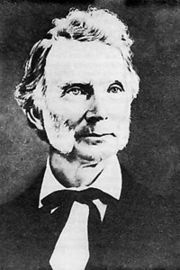
The area where Albany is located was formerly inhabited by the Creek Indians. They called it something like Thronateeska - after their word for "flint" - because of the mineral flint that was found near the river there. The Creeks used this flintstone to make tools and also weapons like arrowheads.
A businessman named Nelson Tift from Connecticut settled along the Flint River in October, 1836, and he named his new town Albany, after New York's state capital city because they both sat at the navigable heads of rivers.
The town of Albany was laid out by Alexander Shotwell in 1836. It was incorporated as a city by an act of the General Assembly of Georgia on December 27, 1838 [1].
Surrounded by a prosperous farming region which produced large amounts of cotton, Albany was in a prime location for transportation of cotton by steamboats on the river, over which Tift had Horace King, a former slave, build a toll bridge in 1858. Albany later became a railroad hub and there is an exhibit on trains at the Thronateeska Heritage Center, which is located at the old railroad station.
In 1841, the Flint River flooded the town.
On April 11, 1906, the Carnegie Library was opened downtown. It functioned as a library through 1985. In 1992, the building was reopened as the headquarters of the Albany Area Arts Council.
In 1912, the downtown U.S. Post Office and Courthouse building opened.
In 1925, the Flint River again flooded the city.
In 1937, Chehaw Park was established as a part of a New Deal program.
On February 10, 1940, a severe tornado hit Albany, and it killed eighteen people and caused widescale damage.
In the summer of 1940, a Major Peacock of the U.S. Army approached the Albany Chamber of Commerce about the possibility of locating an U.S. Army Air Corps training base near Albany. Construction of the base and of the airfield by the Army Corps of Engineers began March 25, 1941. The airfield was temporarily deactivated between August 15, 1946, and September 1, 1947, but after the beginning of the Cold War, and the establishment of the U.S. Air Force in late 1947, the airfield was reactivated and upgraded with strongly-paved runways for a U.S. Air Force base that was called the Turner Air Force Base. The Air Force used this base for very heavy jet bombers, such as the B-52 Stratofortress A number of other Air Force units were also housed at this Air Force Base. [7] as the base was renamed. Among them were the 1370th Photomapping Group [8], and refueling and maintenance functions. The Turner Air Force Base was abandoned by the Air Force, and it was transferred to the usage of the U.S. Navy in 1967. NAS Albany was used as the shore base of nearly all the Navy's RA-5C Vigilante twin-jet carrier-based reconnaissance aircraft. This naval base was permanently deactivated and relinquished to civilian control in 1974 . In 1979, the Miller Brewing Company purchased part of the old naval base's property to build a new brewing plant.[9]
In 1951, the U.S. Marine Corps established a logistics base on the eastern outskirts of Albany.
In 1960, the population of Albany reached 50,000 people.
During the early 1960s, Albany played a prominent role in the Civil Rights Movement (see the Albany Movement).
In 1988 Albany, GA made national headlines as the "Murder Capital of America," with the highest murder rate per capita in the United States.
In 1994, there was another severe flood by the Flint River, which was caused by rainfall from Tropical Storm Alberto, killing 14 people and displacing 22,000.
In 1998, the Flint River crested at 35 feet above its bed, once again flooding parts of Albany.
In 2002, Sherwood Pictures began producing Christian films in Albany, including "Flywheel" (2003), "Facing the Giants" (2006), and "Fireproof" (2008), which reportedly became some of the highest grossing Christian films of all time. Coming soon, "Courageous" (2011) and more later on. Brothers Alex and Stephen Kendrick wrote and produced each film as an outreach of the Sherwood Baptist Church. Soundtracks and novels of the movies followed.
Albany in The Souls of Black Folk
In W. E. B. Du Bois's book, The Souls of Black Folk (1903), Albany was featured in several chapters as a typical African American populated rural town in the Deep South. In his book, Du Bois discussed the culture, agribusiness, and economy of the region. Du Bois described Albany as a small town where local sharecroppers lived. Much of the soil had been depleted of nutrients because of intensive cotton cultivation. Once a bustling small city full of cotton gins and toiling slaves, Albany had declined steadily in the late 1800s as the Civil War and the Emancipation Proclamation drastically altered the demographics and economy of Albany. Du Bois wrote that Dougherty County had many decaying one-room slave cabins, and unfenced fields. Despite the problems, local folklore, customs, and the culture made Albany a notable small city in the South.
Government
Elected officials include a mayor and six city commissioners, all of whom serve four-year terms. The commissioners represent the wards from which they are elected. There is also an appointed city manager who acts as the chief administrative officer. The city has been governed by a city commission and city manager since January 14, 1924. [2].
Economy
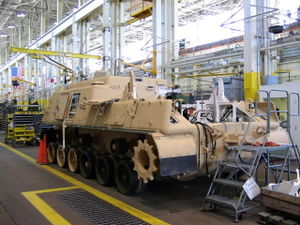
Although Albany has expanded considerably in the past few decades, it is still able to retain the population and environment of a Southern town. Today, although the city is still surrounded by pecan groves, pine trees, farms and plantations, almost none of the population is employed in agriculture.
Health care, education and the Marine Corps Logistics Base Albany are the largest employers. Manufacturing, transportation, and retail trade are also important foundations of Albany's economy and the city acts as a hub for commerce in southwest Georgia.
On December 17, 2008, Cooper Tire and Rubber, one of Albany's largest employers, announced plans to close the local manufacturing facility. Approximately 1,400 employees at the plant will lose their jobs over the course of the next 12 months as Cooper completes the plant shut down.
Top Nine Non-governmental Employers in Dougherty County
(excludes the City of Albany, Dougherty County, and the Marine Corps Logistics Base Albany)
- Phoebe Putney Memorial Hospital
- Procter & Gamble
- Albany State University
- Miller Brewing Company
- Teleperformance USA
- Coats and Clark, Inc.
- Palmyra Medical Centers
- BellSouth Telecommunications
- United Parcel Service
Other notable companies
- L2Networks
- Georgia Pacific Corp.
- MARS Snackfood US
- Mediacom
- Sherwood Pictures
- Thrush Aircraft
Transportation
Southwest Georgia Regional Airport (ABY) is serviced by Atlantic Southeast Airlines, a regional carrier for Delta. Both UPS and DHL use the airport as a sorting facility.
Freight rail service is provided by Georgia Southwestern Railroad and Norfolk Southern Railway.
There is a Greyhound bus station in downtown Albany.
Albany Transit System, operated by the city since 1974, provides fixed-route and paratransit services in Albany and Dougherty county, including service to the airport. The main transfer station is downtown.
Albany is located on Georgia State Route 300 (Georgia-Florida Parkway).
The intersection of Lonesome & Hardup was named the fourth wackiest street name according to a 2006 poll by Car Connection website.[10]
Education
The Dougherty County School System and several private schools provide primary and secondary education. Private schools include Far Horizons Montessori School, Deerfield-Windsor School, Sherwood Christian Academy, Darsey Private High School, Byne Memorial Baptist School, St. Teresa's Catholic School, Life Christian School, A School for Children (The Vertical High School Academy), and Young Unlimited Minds Institute (YUMI). Albany has four public high schools, six public middle schools, and sixteen public elementary schools[11].
Albany is location of both the historically black Albany State University, and Darton College. Both of these are part of the University System of Georgia.
The state-run Albany Technical College [3] teaches post-secondary vocational & occupational training subjects.
Health care
Albany is the home of a not-for-profit regional health system with a 26 county cachement area with Phoebe Putney Memorial Hospital [4] at its hub. Palmyra Medical Centers [5] is a for-profit hospital.
Sports
| Club | Sport | League | Venue | Logo |
| South Georgia Wildcats | Arena Football | AF2, American Conference, Southern Division | James H. Gray, Sr. Civic Center |
Local attractions
Museums and the arts
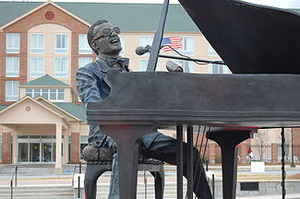
- Albany Area Arts Council [6]
- Albany Ballet Theater
- The Albany Chorale [7]
- Albany Civic Center
- The Albany Concert Association [8]
- Albany Civil Rights Movement Museum [9]
- Albany Municipal Auditorium
- Albany Museum of Art [10]
- The Albany Symphony Orchestra [11]
- Flint RiverQuarium [12]
- The Parks at Chehaw [13] has one of two accredited zoos in the State of Georgia
- RiverQuarium Imagination Theater [14]
- Theatre Albany [15]
- Thronateeska Heritage Center [16]
- Weatherbee Planetarium [17]
- Albany Mall [18]
Parks and monuments
- Albany Civil Rights Memorial
- Albany Railroad Depot Historic District
- Astronauts Memorial
- Confederate Memorial Park
- Freedom Flame
- Freedom Walk
- The Guardian
- Hillsman Park
- Radium Springs - one of the Seven Natural Wonders of Georgia
- RiverFront Park
- Ray Charles Plaza
- Royal Air Force Memorial
- Tift Park
- Veterans Park
Registered historic places
- Albany District Pecan Growers' Exchange
- Albany Housefurnishing Company
- Albany Municipal Auditorium [19] [20]
- Albany Railroad Depot Historic District
- Bridge House (Albany, Georgia) [21]
- Carnegie Library of Albany
- Davis-Exchange Bank Building
- John A. Davis House
- Lustron House at 1200 Fifth Avenue
- Lustron House at 711 Ninth Avenue
- Mount Zion Baptist Church [22]
- New Albany Hotel [23]
- Old St. Teresa's Catholic Church
- Rosenberg Brothers Department Store
- Samuel Farkas House
- St. Nicholas Hotel
- Tift Park
- U.S. Post Office and Courthouse [24]
- Union Depot (Albany, Georgia)
- W. E. Smith House
Climate
| Climate data for Albany, GA | |||||||||||||
|---|---|---|---|---|---|---|---|---|---|---|---|---|---|
| Month | Jan | Feb | Mar | Apr | May | Jun | Jul | Aug | Sep | Oct | Nov | Dec | Year |
| Record high °F (°C) | 83 (28.3) |
86 (30) |
93 (33.9) |
97 (36.1) |
102 (38.9) |
106 (41.1) |
107 (41.7) |
104 (40) |
106 (41.1) |
99 (37.2) |
97 (36.1) |
85 (29.4) |
107 (41.7) |
| Average high °F (°C) | 60 (15.6) |
65 (18.3) |
72 (22.2) |
78 (25.6) |
85 (29.4) |
90 (32.2) |
93 (33.9) |
92 (33.3) |
88 (31.1) |
80 (26.7) |
71 (21.7) |
63 (17.2) |
78 (25.6) |
| Average low °F (°C) | 35 (1.7) |
38 (3.3) |
45 (7.2) |
50 (10) |
59 (15) |
67 (19.4) |
70 (21.1) |
70 (21.1) |
65 (18.3) |
52 (11.1) |
44 (6.7) |
38 (3.3) |
53 (11.7) |
| Record low °F (°C) | 1 (-17.2) |
11 (-11.7) |
10 (-12.2) |
27 (-2.8) |
39 (3.9) |
46 (7.8) |
57 (13.9) |
56 (13.3) |
37 (2.8) |
28 (-2.2) |
14 (-10) |
6 (-14.4) |
1 (-17.2) |
| Precipitation inches (mm) | 6.12 (155.4) |
4.78 (121.4) |
5.71 (145) |
3.54 (89.9) |
3.86 (98) |
4.88 (124) |
6.32 (160.5) |
4.38 (111.3) |
3.77 (95.8) |
2.46 (62.5) |
3.78 (96) |
3.80 (96.5) |
53.40 (1,356.4) |
| Source: [12] | |||||||||||||
Notable Albanians
.jpg)
- Pianist, songwriter and soul singer Ray Charles was born in Albany on September 23, 1930 as "Ray Charles Robinson"
- Big Band leader and jazz trumpeter Harry James was born in Albany on March 15, 1916
- Paula Deen, chef and host of Paula's Home Cooking on the Television Food Network
- Jim Fowler, animal expert and host of the television show, Mutual of Omaha's Wild Kingdom
- Ray Stevens, country music singer
- Olympic gold medal jumper Alice Coachman was born in Albany November 9, 1923
- U.S. Representative from Illinois William L. Dawson was from Albany
- Hamilton Jordan, former White House Chief of Staff, was raised in Albany
- World Series MVP Ray Knight, also managed the Cincinnati Reds
- Golfer Nancy Lopez lives in Albany
- Merritt Ranew, Milwaukee Braves baseball player
- Conductor and composer Wallingford Riegger was born in Albany on April 29, 1885
- U.S. Representative from Illinois Bobby Rush was born in Albany
- Angelo Taylor, Olympic gold medal hurdler
- Reginald D. Hunter, stand-up comedian based in the United Kingdom
- Mark Taylor, Former Lieutenant Governor of Georgia
- Montavious Stanley, NFL player, Atlanta Falcons
- Daryl Smith, NFL player, Jacksonville Jaguars
- Alexander Johnson, NBA player, Miami Heat
- Super Bowl MVP football player Deion Branch
- Nellie Brimberry became the first Postmistress of a major U.S. Post Office in 1910
- Alex Kendrick and Stephen Kendrick, filmmakers and authors, reside in Albany
- Deathcore band With Blood Comes Cleansing
- Travis Richter, Record Producer, Dubstep Producer Modified Noise, Guitarist and Screamer/Singer for From First To Last, now Lead Singer of The Human Abstract
- Jo Marie Payton, actress that played in Family Matters and The Proud Family
- Olympic silver medalist weightlifter Lee James attended Westover High School in Albany
- Kregg Lumpkin, NFL player for the Green Bay Packers
- Buster Posey, professional baseball player for the San Francisco Giants
- Stephen Tanner, bassist for the band Harvey Milk
- D. A. Powell, American Poet, author of Chronic and Cocktails, born 16 May 1963 at Phoebe Putney Memorial Hospital in Albany, GA
- Haley Kilpatrick, The founder of Girl Talk Inc.
Local media
Newspapers
- The Albany Herald [25]
- The Albany Southwest Georgian historically Black Newspaper founded by A.C. Searles
- The Albany Journal Published since 1939; Kevin Hogencamp is current editor and publisher.
Television stations
- Channel 10 WALB (NBC) [26]
- Channel 14 WABW (PBS-GPB) (Pelham, Georgia) [27]
- Channel 24 WBSK (CW) Cable Only
- Channel 31 WFXL (FOX) [28]
- Channel 44 WSWG (CBS) [29]
- Channel 34 W34CZ (Trinity Broadcasting Network)
FM radio stations
- 88.5 W203AT (religious; translator for KEAR)
- 89.3 WBJY (religious)
- 90.3 WAEF (religious)
- 90.7 WWXC (religious, bluegrass)
- 91.7 WUNV (NPR - news, classical) [30]
- 92.7 WASU (Albany State University - college, jazz, urban)
- 93.1 WSRD (religious, talk)
- 96.3 WJIZ (urban)[31]
- 97.3 WRAK "Magic 973" (Classic Rock)[32]
- 98.1 WMRZ "Kiss" (adult urban)[33]
- 100.3 WOBB "B-100"(country)[34]
- 101.7 WQVE "V101.7"(Urban AC)[35]
- 102.1 WNUQ "Q102" (Top 40)[36]
- 102.5 W273AE (religious; translator for WYFK)
- 103.5 WJAD "Rock 103" (classic and mainstream rock) (Leesburg, Georgia)[37]
- 104.5 WKAK "K-Country" (country)[38]
- 105.5 WZBN "Power 105.5" (Urban)
- 106.1 KLOV (Christian Contemporary)
- 107.7 WEGC "Mix 107.7" (adult contemporary)
AM radio stations
- 960 WJYZ (gospel)
- 1250 WSRA (ESPN sports)
- 1450 WGPC (sports)
- 1590 WALG (news, talk)
Miscellaneous
- Albany, Texas, was named in 1873 by county clerk William Cruger after his former home of Albany, Georgia.
- The new Federal Courthouse in downtown Albany is dedicated in memory of the civil rights attorney C.B. King.
- Nicknames for Albany include:
- The Artesian City
- The Good Life City
- The Pecan Capital of the World
- The Quail Hunting Capital of the World
- In 1972, the manager of a local movie theater, a Mr. Jenkins, was convicted of "distributing obscene material" for showing the movie Carnal Knowledge, in Jenkins v. Georgia.
- Albany, GA is the home of the Southwest, GA Radio & Music Conference
Many people in the area and around southwest Georgia pronounce the city's name with the second syllable clearly voiced - "ALL banny" - as distinguished from the common pronunciation in which the second syllable is elided.
The Albany airport code (ABY) if dialed on a phone matches the local area code (229). It is the only airport in the United States with this distinction.
References
- ↑ "Annual Estimates of the Population of Metropolitan and Micropolitan Statistical Areas: April 1, 2000 to July 1, 2007 (CBSA-EST2007-01)" (CSV). 2007 Population Estimates. United States Census Bureau, Population Division. 2008-03-27. http://www.census.gov/population/www/estimates/metro_general/2007/CBSA-EST2007-01.csv. Retrieved 2008-05-22.
- ↑ 2.0 2.1 "American FactFinder". United States Census Bureau. http://factfinder.census.gov. Retrieved 2008-01-31.
- ↑ "US Board on Geographic Names". United States Geological Survey. 2007-10-25. http://geonames.usgs.gov. Retrieved 2008-01-31.
- ↑ "Find a County". National Association of Counties. http://www.naco.org/Template.cfm?Section=Find_a_County&Template=/cffiles/counties/usamap.cfm. Retrieved 2008-01-31.
- ↑ "US Gazetteer files: 2000 and 1990". United States Census Bureau. 2005-05-03. http://www.census.gov/geo/www/gazetteer/gazette.html. Retrieved 2008-01-31.
- ↑ U.S. Metropolitan Areas by Population and Growth, U.S. Census Bureau, 2007. Retrieved 22 May 2008.
- ↑ "Turner AFB". http://www.strategic-air-command.com/bases/Turner_AFB.htm. Retrieved 2006-05-11.
- ↑ "1370th Photomapping and Charting Group". http://www.1370th.com/index.htm. Retrieved 2006-05-11.
- ↑ "History of Turner Field Albany Georgia". http://www.turnerfield-miller.com. Retrieved 2006-05-11.
- ↑ See the entry for September 19 on Ben Scott, Schott's Miscellany Calendar 2009 (New York: Workman Publishing Company, 2008).
- ↑ Dougherty County School System http://www.dougherty.k12.ga.us/schools/schools.htm
- ↑ "Average Weather for Albany, GA - Temperature and Precipitation". Weather.com. http://www.weather.com/outlook/health/fitness/wxclimatology/monthly/graph/USGA0009. Retrieved August 27, 2010.
External links
- Old U.S. Post Office and Courthouse
- The New Georgia Encyclopedia
- History of Albany, Georgia
- Sherwood Pictures
|
|||||||||||||||||
|
|||||||||||||||||
